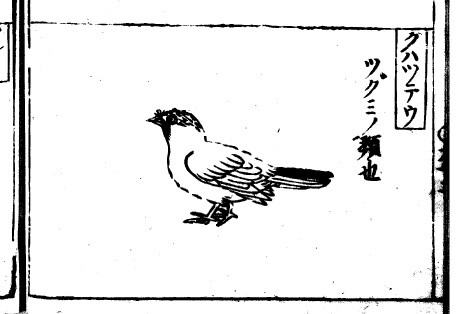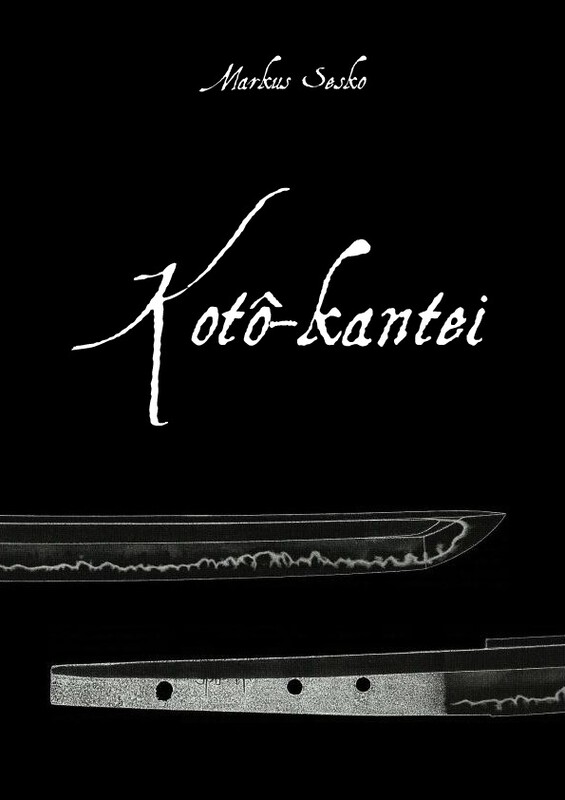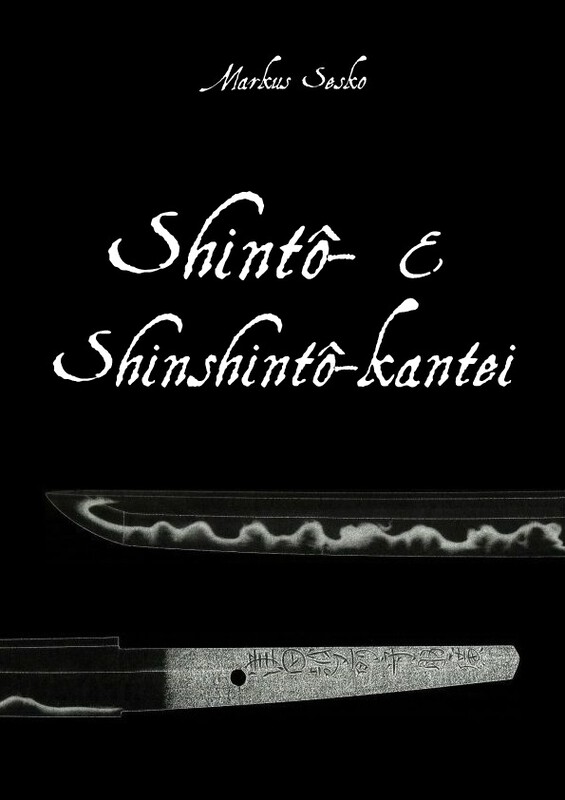-
Posts
948 -
Joined
-
Last visited
-
Days Won
25
Content Type
Profiles
Forums
Events
Store
Downloads
Gallery
Everything posted by Markus
-
@Mike: I see it the other way round. :D It would be quite weird to fake a sword and then inscribe the name of a certain bird which is maybe only known to the readers of Kaibara Ekiken´s publication or a serious bird lover. I doubt that a (Chinese) forger is familiar with that term. Maybe the former owner of the sword had some time and connected whatsoever with that bird. Maybe he was as mentioned a bird lover and spotted one abroad during WWII on a special, to him memorable occasion? The pics look at least decent and do not scream "fake", as Tobias said.
-
The sayagaki reads as follows: 美濃国兼氏 無銘 弐尺三寸二分 安政元寅年十二月本阿弥直之丞研之 成瀬????四郎左衛門重乗 合鑑定 "Mino no Kuni Kaneuji, mumei 2 shaku 3 sun 2 bu. Polished and appraised by Hon´ami Naonojô in the twelfth month of Ansei one, year of the tiger. Naruse ???? Shirôzaemon Shigenori [there are four characters I can´t decipher on the pics so a translation of this line is impossible at the moment]" Hon´ami Naonojô Narishige (本阿弥直之丞成重, 1828-1882) was the 15th generation of the Hon´ami Ko´i line. He was the predecessor of the famous Hon´ami Ringa. 内藤三左衛門尉十一代孫越後村上城主内藤紀伊守信親佩刀也伝之信親嘉永六年老中ニ任シ文久二年辞シ元治元年養子豊前守信民家督節此刀ヲ譲ル "This sword was handed over to the adopted son Naitô Buzen no Kami Nobutami [1850-1868] on the occassion of his succession of the family when Naitô Kii no Kami Nobuchika [1813-1874] - who became rôju elder in the sixth year of Kaei (1853) - retired in the second year of Bunkyû (1864). Naitô Kii no Kami Nobuchika, who wore this sword, was the lord of Murakami Castle of Echigo province and the successor in eleventh generation of Naitô Sanzaemon no Jô [Nobunari, 1545-1612]." It would be nice if it is mentioned in the catalogue that the translation was done by me (Markus Sesko).
-
It is actually the name of a certain bird, found in Kaibara Ekiken´s 1709 publication "Yamato-honzô" (大和本草): I add the pic from the book below. The katakana-noted name of the bird is "ku-ha-tsu-te-u" (クハツテウ), although I am not sure about the actual pronunciation (kwatto?). The additional info says "tsugumi species", whereas "tsugumi" is a Naumann´s Thrush. Cute, I´ve never seen such a rare bird´s name on a swords tang before.
-
I think this is the smiths the mei refers to: Kanesaki (兼先), 9th gen., Bunsei (文政, 1818-1830), Inaba – „Inshū-jū Kanesaki“ (因州住兼先), „Inaba Fujiwara Kanesaki saku“ (因幡 藤原兼先作), „Myōichi Fujiwara Kanesaki“ (妙一藤原兼先), „Myōichi Hōsetsu Nyūdō Kanesaki“ (妙一峯雪入道兼先), civilian name „Heki Yasaburō“ (日置矢三郎), student of Minryūshi Toshizane (眠龍子寿実), those sources who list Jinroku Kanesaki (甚六兼先) as 5th generation list Yasaburō Kanesaki as 6th gen.
-
Unfortunately I wasn´t able to find a relyable "evaluation" of this Yoshimitsu. But spontaneously and out of lack of much info, I would say he was average to lower ranking.
-
Hi Marcello, the mei reads "Yabushita Yoshimitsu". This is the smith in question as listed in my swordsmith index: Yoshimitsu (義光), Shōwa (昭和, 1926-1989), Gifu – „Yoshimitsu“ (義光), civilian name „Yabushita Fujio“ (藪下不二夫)
-
實 is the old unsimplified version of 実, and 真 was written as 眞 before. So far, so good, but as both characters have basically about the same meaning, there were interchangably noted in earlier times. That means even if a tsuba artist was signing with 實幸, it is quite possible that he was noted later with 真幸 instead of 実幸. So I would not read too much into the notation with different characters and think that the Haynes entry H 08003.0 refers to this artist.
-
The correct reading is "Saneyuki". Haynes says "no additional information".
-
Gilles, your reading is correct. But I couldn´t find a Sukenori for that time and that gô, only the Keiô-era Yukisada (幸貞) who used "Ryûshinshi" (龍心子).
-
I am sorry for your trouble with Lulu. I too got a Shinto volume in English I did not order. @Veli: I have an idea. Maybe we can change our wrong volumes because I am just at sending it back to Lulu. Please tell me if this sounds anything good and I offer to refund you the shipping fee. @Gilles: Did you contact Lulu?
-
From a translators viewpoint, the term "fukushiki-gunome" is mostly used to describe the complex gunome interpretations of Sue-Bizen (Sukesada and the like).
-
-
The "problem" is, I have to reformat all the files into the epub format for this. I don´t want to sound lazy but I didn´t have the time to do that and the PDF to be sold at the Lulu marketplace where I can just adapt 1:1 the print file seems to be the most convenient solution at the moment. My question is, if you have bought a Kindle or Apple ebook, do you get an updated version of the publication for free? Or this a kind of service for the fraction of the asked price? Because I guess no one is willing to spend the same amount for an updated ebook.
-
I thank you all for your interest in my publications. Sorry for those who missed some deals at Lulu but unfortunately they didn´t tell me what was coming up and so when I saw the 30 % off, I thought I just had to post that.
-
Thank you Chris for this idea. I already did a German errata but didn´t have the time so far to check the English volumes. It would be of great help if readers point errors out in a sticky thread! Also an option would be to add certain smiths which didn´t make it into my books. @Hoanh: I hope the Lulu support is now back at their desks after the holidays. It also took them a couple of days to answer questions of mine. PS: I attach the German errata via this reply. Korrekturen.pdf
-
Today there is the 30% off deal at Lulu. I wish you all a Merry Christmas and all the best for 2013!
-
Oh, and don´t forget the upcoming Lulu coupons: http://www.lulu.com/holiday-coupons
-
Helly overyone, I just want to revive this thread (viewtopic.php?f=9&t=14361) by a new one (@mods: I hope this is ok) and inform you that the two volumes on Koto-kantei and Shinto-shinshinto-kantei are out now. Also eBooks of both volumes are available. I almost kept the announced price but the project turned out to have more pages than thought (484 + 440 pages for the German and 464 + 416 pages for the English volumes) so the final price is 75,93 Euro. Thank you for your understanding. All versions, i.e. the English, German and eBook versions can be found here: http://www.lulu.com/spotlight/nihontobooks Please be careful to get the right language and thank you for your interest
-
I am pretty sure that the mei reads "Tanshû Minamoto Masashige". This makes him a meikan-more, a smith who didn´t make it into the meikan lists. There is clearly the ninben (亻) to the left and the (旦) radical to the right.
-

Preliminary announcement: New kantei book
Markus replied to Markus's topic in General Nihonto Related Discussion
Thank you guys! There will be an eBook version and I have to check the printing cost when the final translations are finished but I think the price will be around 70 Euro per volume (i.e. 140 per set). @Chris: At the moment at has levelled off at 12h working, 6h sleeping and 6h family per day :D But I would love to spend all these 12h on sword and tosogu related things... -
Dear members, I would like to annouce a new book of mine which will be out around mid or late December this year. This project is a compilation of ALL kantei blades (i.e. the "real" kantei at the beginning and the five swords described in the middle part) plus their descriptions of the Token-Bijutsu magazines from 2006 to 2012. The publication will be divided up into a "Koto-kantei" and a "Shinto-Shinshinto-kantei" volume and provides altogether more than 350! blades, namely as mentioned PLUS the oshigata of the magazines. So this will be an independent reference work, basing on revised translations from the Japanese original (i.e. not the English translation provided by the NBTHK on their homepage). As the focus is as mentioned on kantei, this is a rich source of information about the reasons for an attribution to the smith or school in question and about why other attributions can be ruled out. For the time being I add the provisional cover and table of contents. Thank you for your attention. koto-contents.pdf shinto-shinshinto-contents.pdf
-
Some small corrections: 十郎左衛門男・仲谷鎌太郎佩刀 Jurôzaemon-nan - Nakatani Kamatarô haitô "worn by Nakatani (also read as Nakaya) Kamatarô, son of Jurôzaemon"
-
Maybe the Chinese forger had a funny day at his workshop and knew what he was doing but was sure that nobody ever will be able to read what he writes. The "signature" (迌條毫又用佞信正圖) can be interpreted as: "This [條] is by no means [毫] a tù/tou [迌, whatever that means, maybe "sword" in some dialect]. Moreover [又] it was made to [用] deceive [佞] and to defraud [圖] exactly [正] those who believe [信]."
-
The entry from my Swordsmith Index: Kiyokane (清兼), Shōwa (昭和, 1926-1989), Aichi – „Mikawa no Kuni Okazaki-jū Tachibana Kiyokane“ (三河国岡崎住橘清兼), „Suirosai Tachibana Kiyokane“ (椎魯斎橘清兼), „Ryūjōshi Kiyokane“ (龍城子清兼), civilian name „Tsutsui Seiichi“ (筒井清一), gō „Suirosai“ (椎魯斎) and „Ryūjōshi“ (龍城子), born March 25th 1907, his family was since the 1st gen. Tsutsui Ichirōbei Kiyokane (筒井市郎兵衛清兼) successively working for the Okazaki fief (岡崎藩) of Mikawa proince, he studied under Kurihawa Akihide (栗原昭秀) and worked as rikugun-jumei-tōshō, he lived in Aichi´s Nagakute (長久手)







